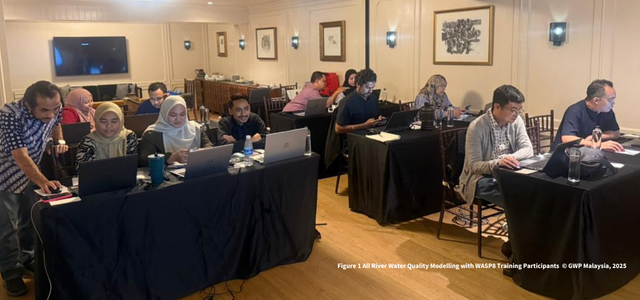Climate change impacts not only atmospheric conditions but also aquatic systems through changes in water temperature and conductivity. Hydrological variations can influence the release, transport, and redistribution of nutrients and pollutants from land to rivers, further degrading water quality and leading to eutrophication (Asresu et al., 2025).
In Malaysia, many rivers are already affected by pollution from solid waste, sediments, and chemical and organic contaminants arising from diverse land-use activities. This pollution directly impacts agriculture and public water supply, as most of these services rely on river water sources. Considering the additional pressures climate change will impose on aquatic systems, accurate estimation of pollutant distribution and degradation under various hydrological scenarios is vital for effective river water quality management.
One tool that supports this effort is the Water Quality Analysis Simulation Program (WASP), a free modeling software that helps interpret and predict water quality responses to natural phenomena and human-induced pollution. WASP is a dynamic compartment-modeling program that simulates aquatic systems, including both the water column and underlying sediments.
The program allows users to analyze one-, two-, and three-dimensional systems and to model various pollutant types. It represents processes such as advection, dispersion, mass loading, and boundary exchange over time. WASP can also be linked with hydrodynamic and sediment transport models to provide flow, depth, velocity, temperature, salinity, and sediment flux data.
Workshop Objectives:
-
To introduce the fundamentals of river water quality modeling using the WASP modeling package.
-
To provide hands-on experience in developing and applying the WASP river model.
-
To conduct river water quality impact assessments using WASP.
Workshop Outcome:
Participants gained practical skills in applying WASP 8 for river water quality modeling during the intensive two-day training workshop. The training enhanced national capacity to assess and manage river pollution challenges under changing climatic conditions.
